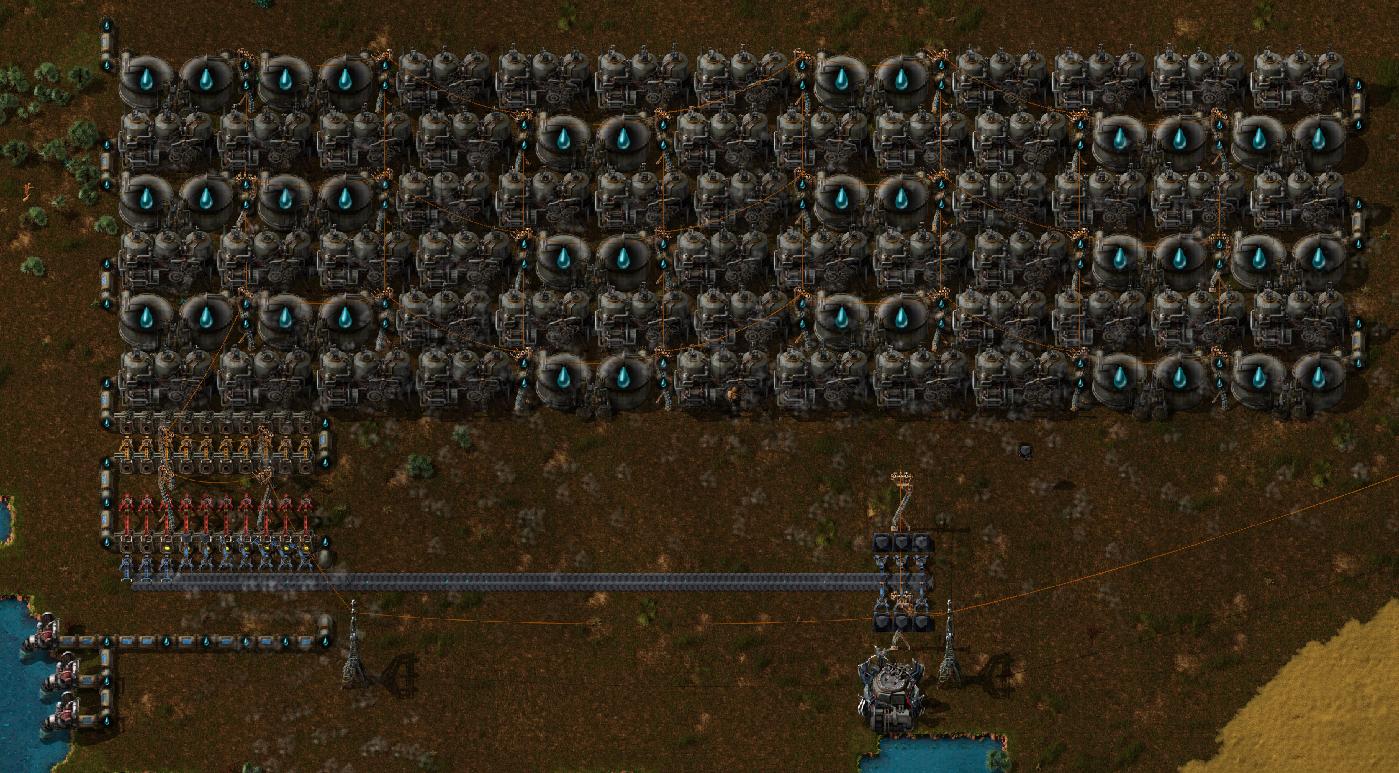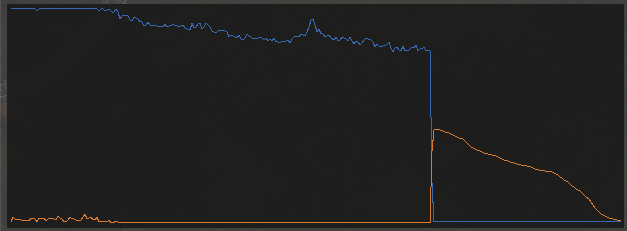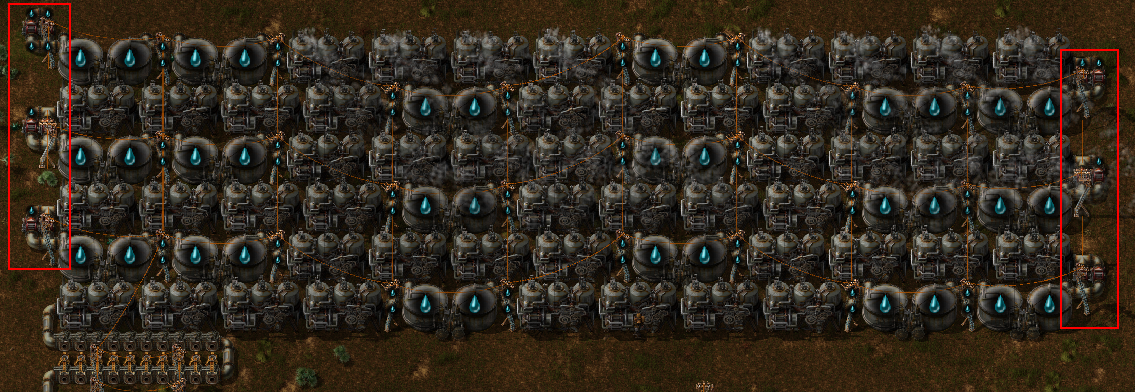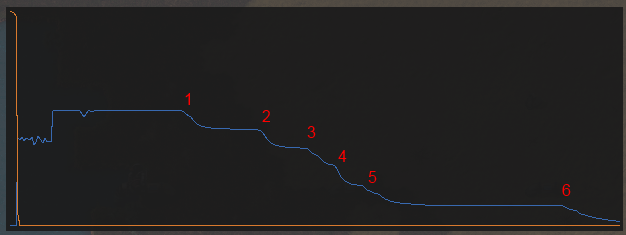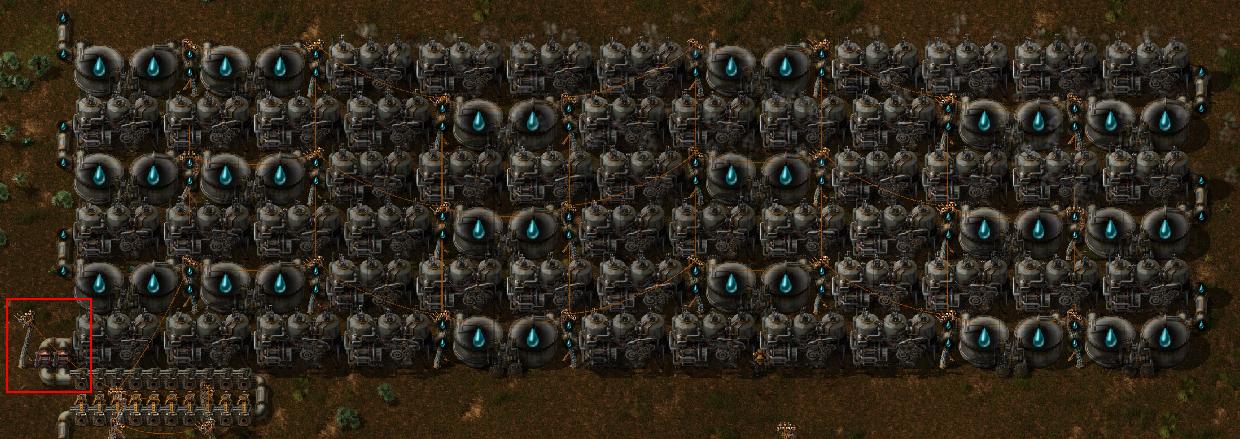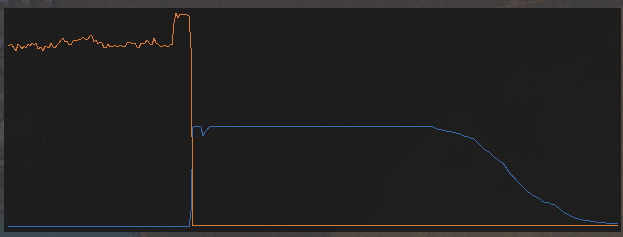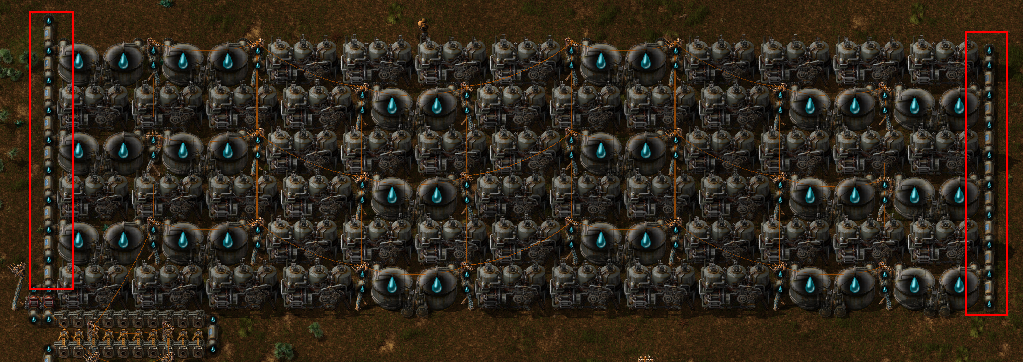Water capacitor
Posted: Tue Apr 14, 2015 2:05 pm
So I've encountered a problem with powering all those fancy laser turrets scattered all around when I have only 10 MW of maximum output. Basically there are literally HUNDREDS of laser turrets out there while my factory uses only about 8 MW for everything. And so after a while of getting creative, I've come up with this monster. Just look at it:

Oh boy, this is insane. The concept is simple: pipes can't handle more than 10 units of water and therefore putting water tanks in the beginning prove useless. So if I can't put them in the beginning, why can't I put them after every 10 steam engines? I put them and boom!, here we go. Water tanks are supposed to smoothen shortage of water after using 10 steam engines and also to store power as I mentioned here: https://forums.factorio.com/forum/vie ... 50&p=46183
In the screenshot you can see: 90 steam engines, 13 boilers, 16 water tanks, 1 pump. 90 steam engines have maximum output of 53.1 MW which is enough to power up nearly 89 laser turrets which basically means about 1335 damage/sec. 53.1 MW is like having 885 solar panels (it's goddamn 7965 tiles)! Do I even need to mention how MUCH space you can save by using this setup?
Speaking of sizes, let's compare this design with others by size:
90 steam engines: 90 * 15 = 1350 tiles
16 water tanks: 16 * 9 = 144 tiles
Not used space: 2*5*8*9 = 720 tiles
2214 tiles used.
Accumulators:
53.1 MW output can be get by using 177 accumulators.
177 accumulators take only 708 space excluding power lines. Three time as less as water capacitor but the problem is that its potential capacity is only 885 MJ.
Now compare it to water capacitor, which will work just like this guy:
16 water tanks are able to store 40000 units of water. According to the thread mentioned above, a unit of water heated to 100 degrees stores 85 kJ of energy. It means that water tanks alone provide 3 400 000 kJ (3.4 GJ, which is nearly 4 times as much as accumulators' capacity). But wait, there's more! Water is also stored in steam engines too. 90 steam engines hold 900 units which means 76500 kJ of extra energy. Summing it up altogether, we get 3 476 500 kJ of energy stored in that system. In order to get similar capacity there need to be 696 accumulators which will take 2781 tiles.
If we take a test and put 89 laser turrets to drain all that energy, we'll get next results:
1. For 177 accumulators we'll get only 250 damage inflicted.
According to Foreman, 177 accumulators will cost me:
1593 iron, 4830 crude oil (crude oil is usually precious resource)
2. For water capacitor we'll use only 2520 iron and that is FAR MORE common resource than oil.
So to sum it all up:
1. Water capacitors
Pros:
Extreme energy capacity
Power output can be easily changed as you please
Energy capacity can be changed independently from output (just put more water tanks next to existent ones)
Can be placed anywhere, but requires special shape
Cheap enough
Cons:
Energy output is NOT constant. It downs as it runs out of water.

It takes more space than accumulators.
2. Accumulators
Pros:
Can be placed anywhere in any shape
Configurable
Takes less space
Emits constant supply of power no matter what
Cons:
Сomparatively low energy density (5 MJ per 4 tiles (1.25 MJ a tile) is no match for 212.5 MJ per 9 tiles (23.6 MJ a tile))
Kinda expensive

Oh boy, this is insane. The concept is simple: pipes can't handle more than 10 units of water and therefore putting water tanks in the beginning prove useless. So if I can't put them in the beginning, why can't I put them after every 10 steam engines? I put them and boom!, here we go. Water tanks are supposed to smoothen shortage of water after using 10 steam engines and also to store power as I mentioned here: https://forums.factorio.com/forum/vie ... 50&p=46183
In the screenshot you can see: 90 steam engines, 13 boilers, 16 water tanks, 1 pump. 90 steam engines have maximum output of 53.1 MW which is enough to power up nearly 89 laser turrets which basically means about 1335 damage/sec. 53.1 MW is like having 885 solar panels (it's goddamn 7965 tiles)! Do I even need to mention how MUCH space you can save by using this setup?
Speaking of sizes, let's compare this design with others by size:
90 steam engines: 90 * 15 = 1350 tiles
16 water tanks: 16 * 9 = 144 tiles
Not used space: 2*5*8*9 = 720 tiles
2214 tiles used.
Accumulators:
53.1 MW output can be get by using 177 accumulators.
177 accumulators take only 708 space excluding power lines. Three time as less as water capacitor but the problem is that its potential capacity is only 885 MJ.
Now compare it to water capacitor, which will work just like this guy:
16 water tanks are able to store 40000 units of water. According to the thread mentioned above, a unit of water heated to 100 degrees stores 85 kJ of energy. It means that water tanks alone provide 3 400 000 kJ (3.4 GJ, which is nearly 4 times as much as accumulators' capacity). But wait, there's more! Water is also stored in steam engines too. 90 steam engines hold 900 units which means 76500 kJ of extra energy. Summing it up altogether, we get 3 476 500 kJ of energy stored in that system. In order to get similar capacity there need to be 696 accumulators which will take 2781 tiles.
If we take a test and put 89 laser turrets to drain all that energy, we'll get next results:
1. For 177 accumulators we'll get only 250 damage inflicted.
According to Foreman, 177 accumulators will cost me:
1593 iron, 4830 crude oil (crude oil is usually precious resource)
2. For water capacitor we'll use only 2520 iron and that is FAR MORE common resource than oil.
So to sum it all up:
1. Water capacitors
Pros:
Extreme energy capacity
Power output can be easily changed as you please
Energy capacity can be changed independently from output (just put more water tanks next to existent ones)
Can be placed anywhere, but requires special shape
Cheap enough
Cons:
Energy output is NOT constant. It downs as it runs out of water.

It takes more space than accumulators.
2. Accumulators
Pros:
Can be placed anywhere in any shape
Configurable
Takes less space
Emits constant supply of power no matter what
Cons:
Сomparatively low energy density (5 MJ per 4 tiles (1.25 MJ a tile) is no match for 212.5 MJ per 9 tiles (23.6 MJ a tile))
Kinda expensive

